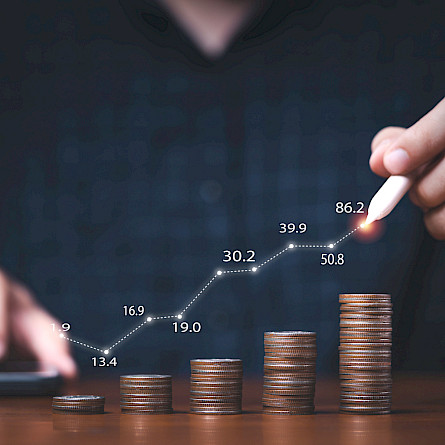A security that offers a fairly high dividend is attractive to many investors, particularly those who want to derive regular income from their stock portfolio. Also, for non-registered accounts, dividends are fiscally more attractive than interest.
Another reason to appreciate a dividend stock is that many companies increase their dividends year after year. I know of an investor who has had shares of Royal Bank since the 1980s. Compared to its original cost of $4.10 per share, the annual dividend of $5.28 per share the company pays today represents 128%. Not bad!
I believe, however, that an investor should never base investment decisions on simply a high dividend yield (calculated by dividing a stock’s current annual dividend per share by its stock price). By itself, this performance does not mean much because it could be as much an attraction as a good reason to avoid a stock.
The company that decides to pay a dividend to its shareholders simply admits that it has too much capital for its investment opportunities. Paying a dividend usually means the company’s growth prospects are limited.
Also, a company that chooses to introduce a quarterly dividend will find it difficult to cancel or suspend it later. Such a decision is generally very frowned upon by investors. This is why the payment of a dividend tends to limit a company’s financial flexibility.
The decision to pay a dividend is one of a company’s capital allocation options. The others are to reinvest in growth, either organically (R&D, investments in factories, advertising, etc.) or by acquisition, to repay debt or buy back company shares. A good management team will choose the avenue (or avenues) likely to create the most value for its shareholders in the long term.
I recently studied the case of a small company that is growing and whose strategy is to grow through acquisitions. I find it hard to understand why it pays a dividend that represents a high percentage of its profits. In fact, I see this dividend as a poor use of the company’s capital and a possible source of financial risk.
For the investor who aims for long-term capital appreciation, a company that chooses to reinvest all its profits in its operations or in share buybacks is often more attractive than one that pays a large dividend. Companies like CGI (“GIB.A”) and Berkshire Hathaway (“BRK.B”) illustrate this point well. Over the past 20 years, these securities have offered annual compound returns (without dividends) of 13.0% and 9.7% respectively. Moreover, for those who have never sold their shares in these companies, no tax will have been paid to date.





